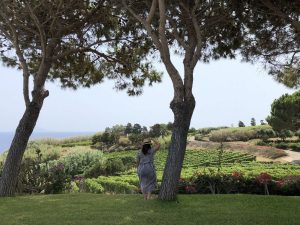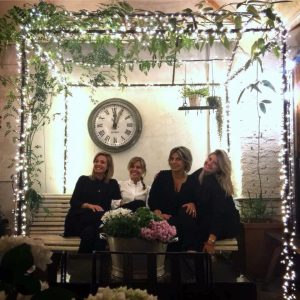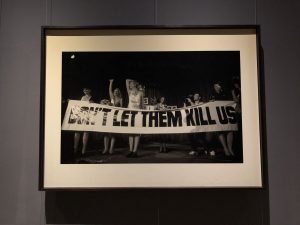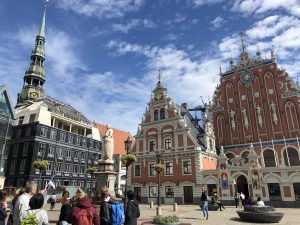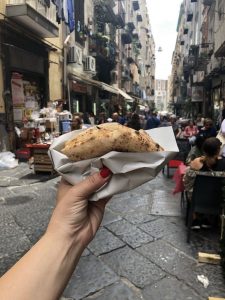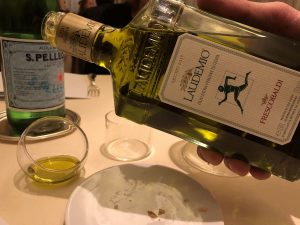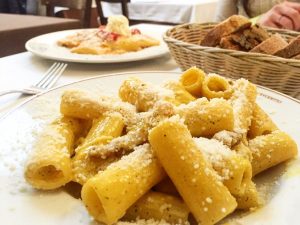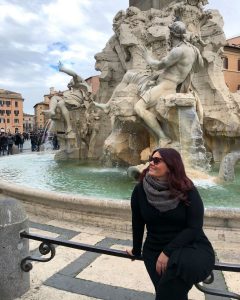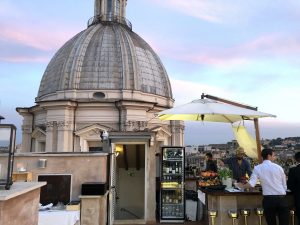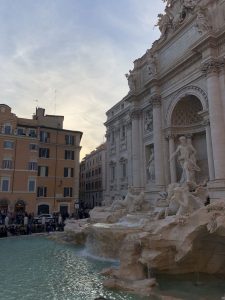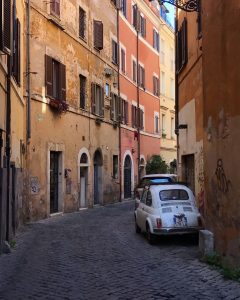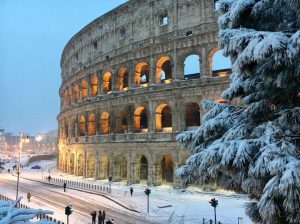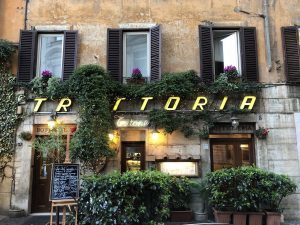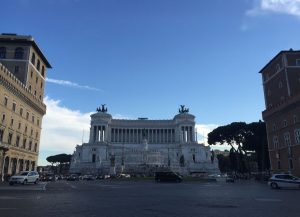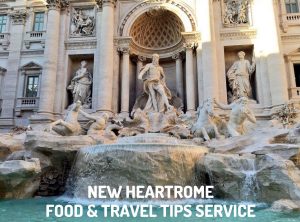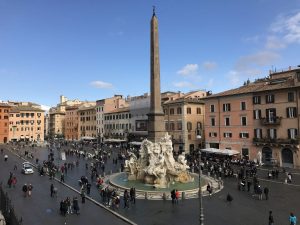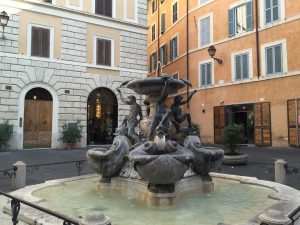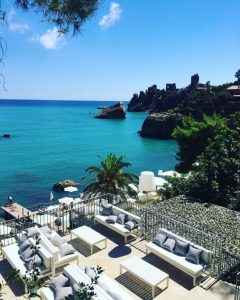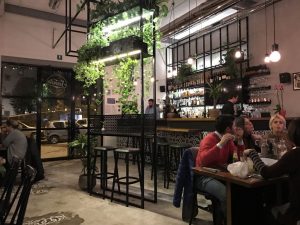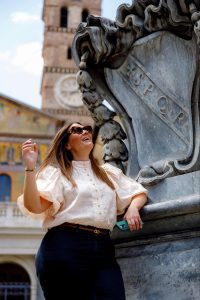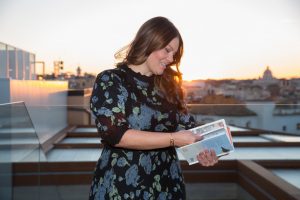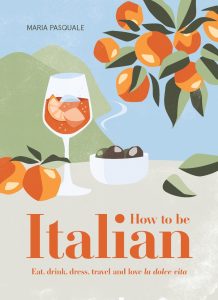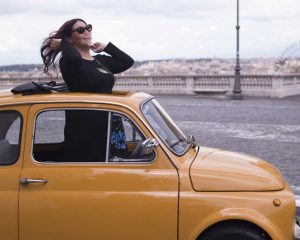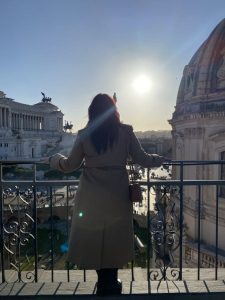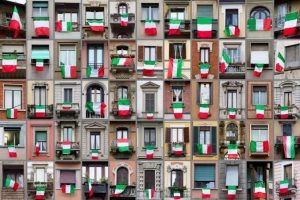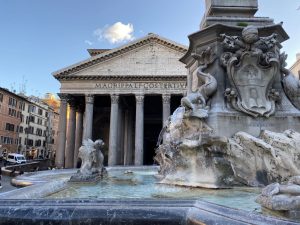Rome means many things to me.
And while living in one of the most beautiful cities in the world carries some perceived glamour, it’s not all about pizza, the Trevi Fountain and gelato.
The city has evolved even as a tourist destination over the past decade, offering a more international vibe and the opportunity for travellers to experience so much more than the cliché. And this is because it has adapted relatively well to the fact that the international traveller as a concept has changed. People are travelling more and more often. They are coming to Rome for not their first or second time but coming back again and again. So as a result and as evidenced by the rise in ‘off the beaten track’ activities on offer globally, travellers are curious, searching for new things to do and have a desire to live a little more of the real and local life.
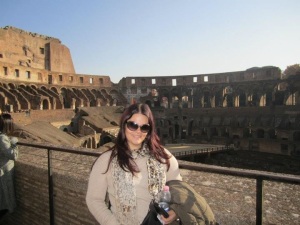
But this post is more about honouring the icons that characterise the city.
It’s not about the array of diverse and uniquely Roman experiences one can have but about the monuments that are symbolically Rome.
The ones that make it immediately recognisable around the world. They are steeped in history and a modern day reminder of the historical context that gave birth to Rome as a modern and thriving metropolis.
In my opinion they are mind blowing, jaw dropping and utterly beautiful.
They’re just the thing that you walk or drive past on one of those (rare) days when you’re questioning your very reason for living here that make you want to shout to the universe, “If anyone needs me, I’ll be living in ROME! Capital of the ancient world! Caput mundi… Roma!!!”
So here are my top 5 Rome monuments, the way I like to experience them and (while they don’t need much explanation) a bit about what they signify to the city.
If you have been to Rome you will have no doubt visited these sights and if you are planning to visit, they will surely be on your list. The historical centre of Rome is actually quite compact and with all of the monuments within walking distance from each other, you can generally tick these sights off your list in a day!
If you are coming for a visit and want to tour the sights, there is no shortage of agencies here but some operators I can recommend are Walks of Italy (www.walksofitaly.com) or Understanding Rome (www.understandingrome.com).
Oh and.. all photos are my own 🙂

Trevi Fountain
La Fontana di Trevi in Piazza Trevi is hands down my original favourite monument of Rome.
It is the largest Baroque fountain in the city and of course it is probably the most famous fountain in the world. Standing at 26 metres high and 20 metres wide, it is the end point of the Aqua Virgo which was an aqueduct constructed in 19BC. It brings water from the Salone Springs (about 20km away) and supplies fountains in the historic centre with water.
Did you know that an estimated €3000 of coins is thrown into the fountain per day? Over the years, I have been told that this goes into the fountains restoration and more recently to subsidise a supermarket for the needy. Needless to say, there are constant attempts by tourists to steal coins from the Trevi.
Legend has it that you must throw two coins in the fountain. With one coin you make a wish and the other coin is to ensure your return to the eternal city. There is much debate over technique but I use right hand over left shoulder and clearly it works for me every time!
I can just sit here and listen to the flow of water and people-watch all day and night long. It’s always packed out and the best time in my opinion (unless you are on an organised tour) is really early morning or really late at night, say after about 11pm when most of the large tour groups have finished for the day. But on the odd occasion that I pass by around lunch time, I grab a slice of pizza at the L’Antico Forno di Piazza Trevi (Via Delle Muratte) and have a wander or try to find a seat.
Getting there: Metro stop Barberini (Line A, Red Line) which is two stops from Roma Termini (central station).
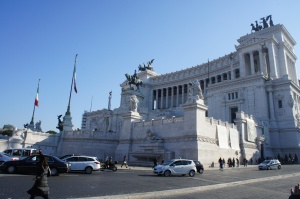
Monument to Vittorio Emmanuele II
Situated in Piazza Venezia, the Monument to Vittorio Emmanuele II is often referred to in Italian as Il Vittoriano or colloquially referred to by some foreigners and tourists as the wedding cake – because it’s so big and white!
Built using white limestone in 1885, this monument to King Victor Emanuel II was inaugurated in 1911 but took another 20 years to be completed. Therefore only since 1921 has it been the symbol of Italian unity. It features the tomb on the Unknown Soldier and a gigantic equestrian statue of the King in bronze.
In my opinion the best view you get of Vittorio Emanuele II is walking up Via del Corso (one of the main thoroughfares in the historical centre). It’s so imposingly large and beautiful. I also love driving through Piazza Venezia – it stands tall and proud as a beacon of Italian unity. And just walking by it, you can appreciate its sheer size – it’s huge! It’s pretty much moved up the ranks of my favourite sights in the city since moving here.
Getting there: Metro stop Vittorio Emanuele (Line A, Red Line) one stop from Roma Termini (Rome Central Station).

The Pantheon
The Pantheon is an amazing architectural structure with large granite Corinthian columns. It was built as a temple to all the gods of ancient Rome. Emperor Hadrian rebuilt it in circa 126AD.
The Pantheon’s dome remains the world’s largest unreinforced concrete dome and since the 7th century has been used as a Roman Catholic church known as Santa Maria della Rotonda (it sits in the square, Piazza della Rotonda).
It’s free to go inside and you must go in to see the beautiful interior and light shining through from the oculus at the centre of the dome which opens to the sky.
Getting there: The Pantheon sits between the Trevi Fountain and Piazza Navona (walking distance from either). The closest metro stop is Barberini (Line A, Red Line) which is two stops from Roma Termini.
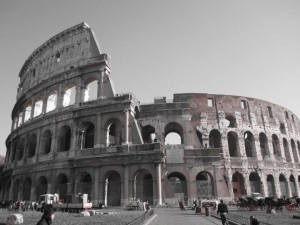
Colosseum
The Colosseum sits just east of the Roman Forum and is the largest ever amphitheatre built in the Roman Empire and as such one of the greatest works of architecture and engineering. Used for gladiatorial contests and public spectacles like executions, it had a seating capacity of 50,000.
It remains one of the most iconic sympols of imperial Rome and therefore one of Rome’s most popular tourist attractions. You can visit the Colosseum as part of a guided tour or on your own (with the addition of a radio guide if you like). The hypogeum (underground) of the Colosseum only recently reopened during the Easter weekend, having been closed due to flooding for almost six months.
You can of course get great views of the Colosseum from a number of places in the city but if you want to have a drink with a view of this breathtaking piece of architecture, my tip is Oppio Cafe (www.oppiocaffe.it) who put on a great aperitivo buffet.
Getting there: Metro stop Colosseo (Line B, Blue Line) which is two stops from Roma Termini.
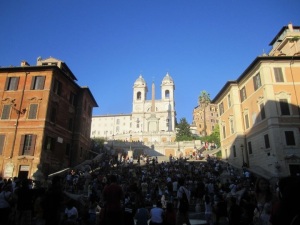
Spanish Steps
A set of 138 steps in the centre of the city known in Italian as La Scalinata della Trinità dei Monti, the Spanish Steps are located in Piazza Spagna and a place for people to meet and hang out.
They represent the widest staircase in Europe and the church of Trinità dei Monti sits at the top of the stairs. The steps were built with French diplomat Stefano Gueffier’s funds in 1723–1725, linking the Bourbon Spanish embassy to the Holy See (Vatican). At the foot of the stairs lies Bernini’s famous Fontana della Barcaccia (fountain).
After you’ve sat on the steps for a while, I suggest a stroll down Via dei Condotti – Rome’s high-end designer shopping strip where you’ll find all the Italian and international couture names like Prada, Dior, Gucci, Armani, Dolce and Gabbana and so on. The other streets around Piazza Spagna like Via del Babuino are also great for some boutique shopping. And then of course the street made famous in Roman Holiday – Via Margutta. This narrow street is where Gregory Peck (aka Joe Bradley) famously resided in the studio apartment number 51. Via Margutta is now occupied by artists’ galleries and antique shops.
Getting there: Metro stop Spagna (Line A, Red Line) which is three stops from Roma Termini.
Enjoy!!
What are your favourite monuments in the eternal city?
Signing off from Rome
Baci Maria





